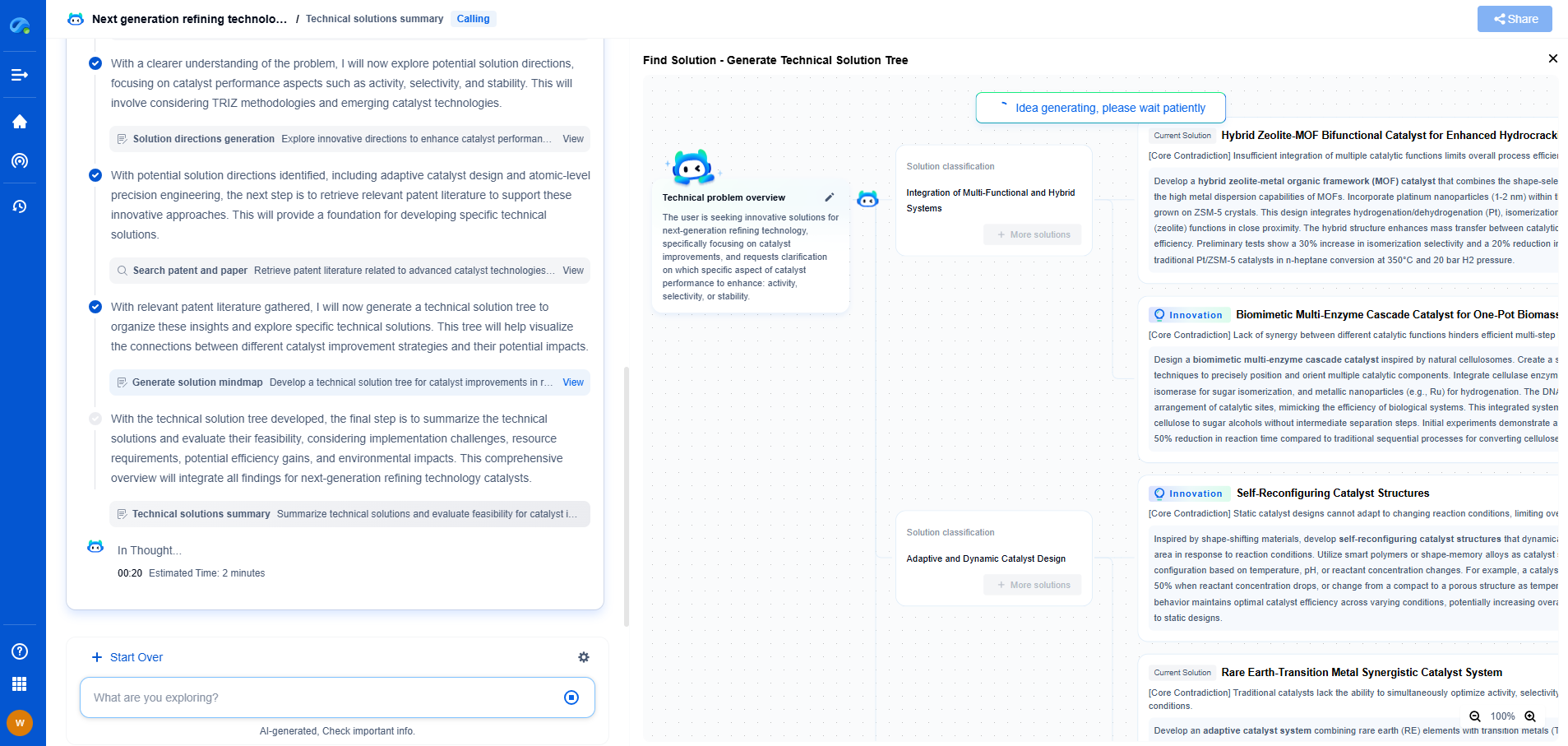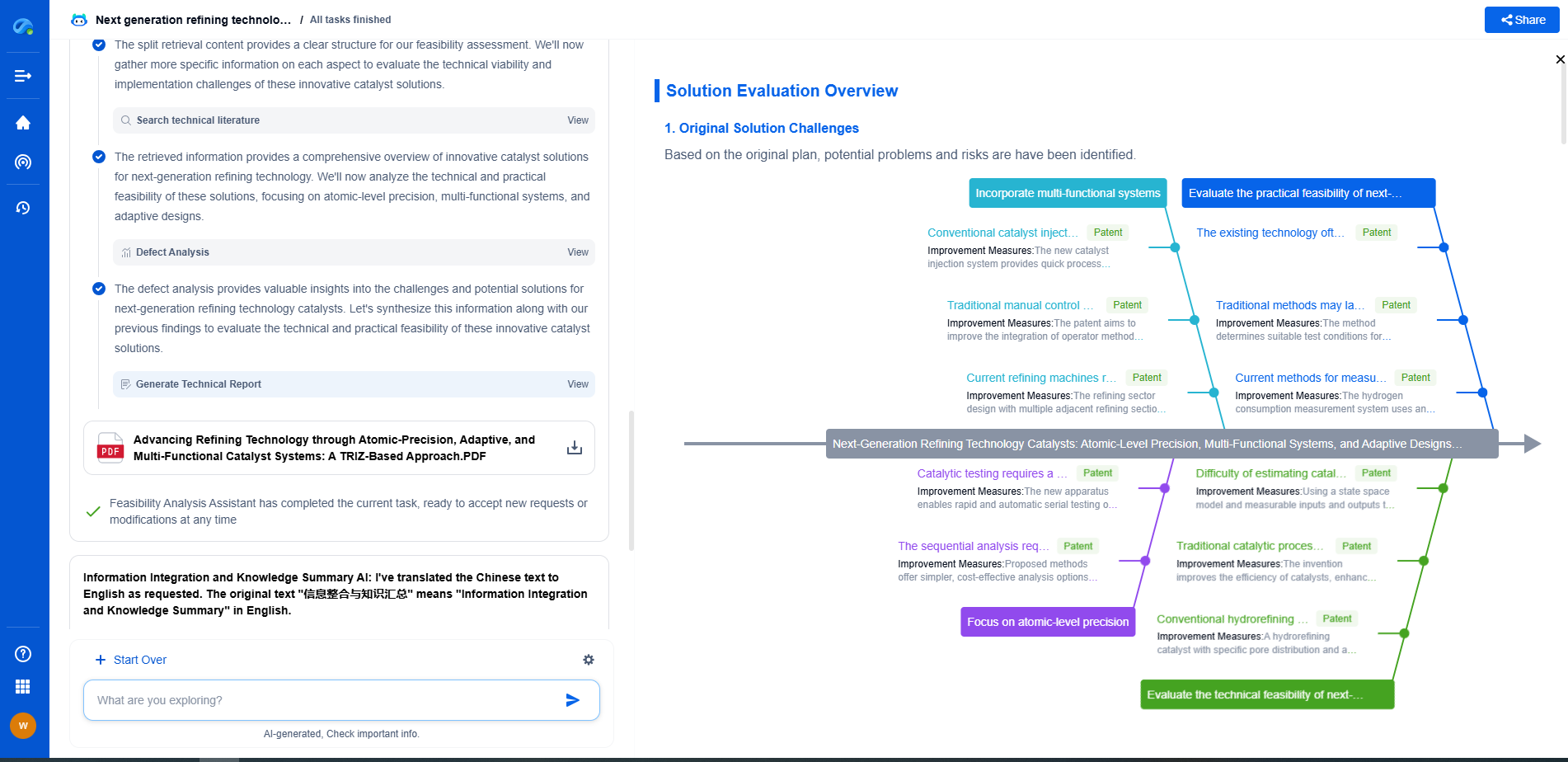Hardware vs software bottlenecks: How to detect and optimize them?
JUL 4, 2025 |
Understanding Hardware Bottlenecks
Hardware bottlenecks occur when the physical components of a system limit its performance. Key indicators of hardware bottlenecks include slow data processing, prolonged response times, and reduced system throughput. Common perpetrators are the CPU, memory (RAM), storage devices, and network interfaces.
**Identifying Hardware Bottlenecks**
1. **CPU Limitations**: If tasks take longer than expected or the system becomes unresponsive under load, the CPU might be the culprit. Monitoring tools like Task Manager (Windows) or Activity Monitor (Mac) allow you to check CPU usage. If usage consistently approaches 100%, consider it a bottleneck.
2. **Memory Constraints**: Insufficient RAM can cause a system to rely on slower disk-based virtual memory, leading to sluggish performance. Signs include frequent swapping or paging, which can be monitored using tools like Resource Monitor.
3. **Storage Performance**: A slow hard drive or SSD can bottleneck data transfer rates. If read/write speeds are consistently high, consider upgrading to a faster drive or checking for fragmentation.
4. **Network Bottlenecks**: High latency and low throughput signal network issues. Tools such as ping tests, traceroute, and network monitoring software help diagnose these problems.
**Optimizing Hardware Bottlenecks**
- **Upgrade Components**: If a component is consistently maxed out, consider upgrading. More RAM, a faster SSD, or a higher-performance CPU can drastically improve system performance.
- **Regular Maintenance**: Ensure hardware components are clean and well-ventilated to prevent overheating and failure. Regular updates to drivers and firmware can also enhance performance.
- **Balance Loads**: Distribute tasks across multiple systems or CPUs to prevent overloading a single component.
Understanding Software Bottlenecks
Software bottlenecks are restrictions within applications or operating systems that impede performance. These bottlenecks often arise from inefficient code, memory leaks, or poor resource allocation, causing applications to run slower than necessary.
**Identifying Software Bottlenecks**
1. **Code Inefficiencies**: Slow-running applications may indicate poorly optimized code. Profiling tools like Perf (Linux) or Visual Studio Profiler can identify parts of the code that consume the most resources.
2. **Memory Leaks**: Applications that consume increasing amounts of memory over time may suffer from memory leaks. Monitoring tools can help detect these issues by tracking resource usage patterns.
3. **Concurrency Issues**: Poorly managed threads or processes can lead to deadlocks or race conditions, stalling application performance. Tools like thread analyzers can assist in identifying these problems.
**Optimizing Software Bottlenecks**
- **Refactor Code**: Review and refactor inefficient code segments. Use algorithms and data structures that are best suited for the task to improve execution speed.
- **Optimize Resource Management**: Ensure proper allocation and deallocation of resources, implement garbage collection effectively, and manage memory usage carefully.
- **Enhance Concurrency Handling**: Implement robust concurrency control mechanisms such as locks, semaphores, or queues to manage thread execution efficiently.
**Conclusion**
Understanding and optimizing hardware and software bottlenecks is essential for maintaining high system performance. By systematically identifying bottlenecks and implementing strategic optimizations, you can significantly enhance the efficiency and reliability of your systems. Regular monitoring, analysis, and maintenance should be part of your routine to prevent and address bottlenecks promptly.
Accelerate Breakthroughs in Computing Systems with Patsnap Eureka
From evolving chip architectures to next-gen memory hierarchies, today’s computing innovation demands faster decisions, deeper insights, and agile R&D workflows. Whether you’re designing low-power edge devices, optimizing I/O throughput, or evaluating new compute models like quantum or neuromorphic systems, staying ahead of the curve requires more than technical know-how—it requires intelligent tools.
Patsnap Eureka, our intelligent AI assistant built for R&D professionals in high-tech sectors, empowers you with real-time expert-level analysis, technology roadmap exploration, and strategic mapping of core patents—all within a seamless, user-friendly interface.
Whether you’re innovating around secure boot flows, edge AI deployment, or heterogeneous compute frameworks, Eureka helps your team ideate faster, validate smarter, and protect innovation sooner.
🚀 Explore how Eureka can boost your computing systems R&D. Request a personalized demo today and see how AI is redefining how innovation happens in advanced computing.
- R&D
- Intellectual Property
- Life Sciences
- Materials
- Tech Scout
- Unparalleled Data Quality
- Higher Quality Content
- 60% Fewer Hallucinations
Browse by: Latest US Patents, China's latest patents, Technical Efficacy Thesaurus, Application Domain, Technology Topic, Popular Technical Reports.
© 2025 PatSnap. All rights reserved.Legal|Privacy policy|Modern Slavery Act Transparency Statement|Sitemap|About US| Contact US: help@patsnap.com

